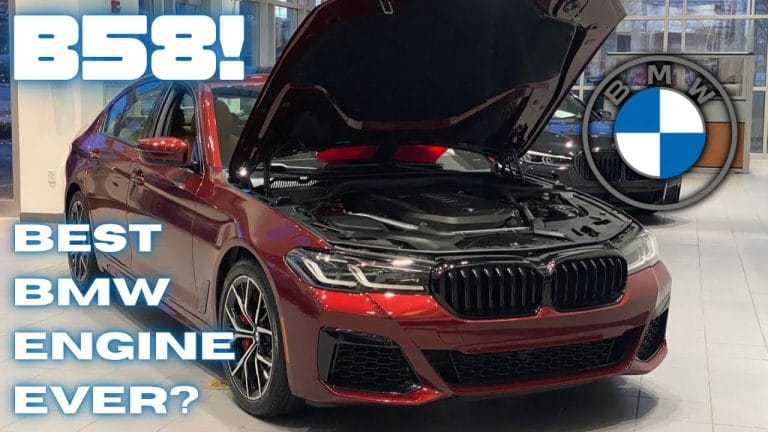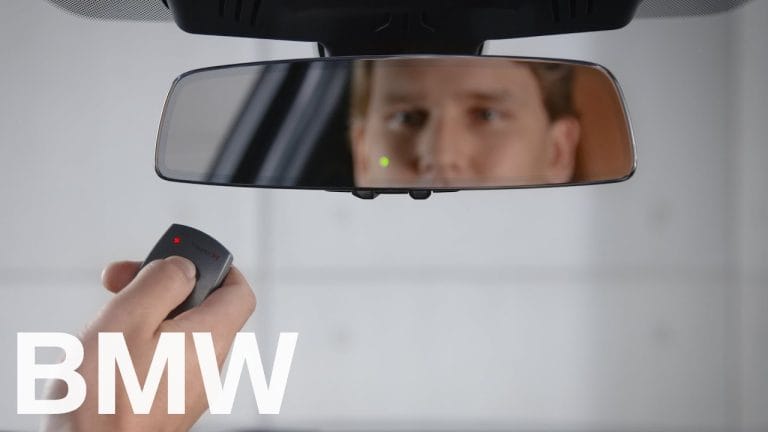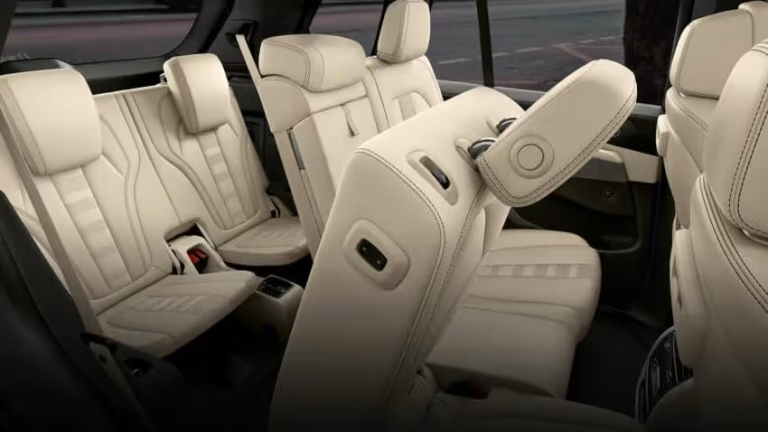Adaptive M Suspension on BMW: How It Works & Why It’s Worth It
Adaptive M Suspension on BMW is an advanced suspension system that automatically adjusts your BMW’s shock absorbers for the best balance between comfort and handling. It changes stiffness in real time based on road conditions, speed, and driving mode.
You’re about to get a clear, mechanic-approved explanation without the boring jargon. This guide will walk you through what it is, how it works, the real benefits, and even the problems you should watch out for.
In the next few minutes, you’ll learn how Adaptive M Suspension turns your BMW into both a smooth cruiser and a sharp-handling sports car, why it’s a big deal for driving feel, and whether it’s worth your money.
What Exactly is Adaptive M Suspension on BMW?
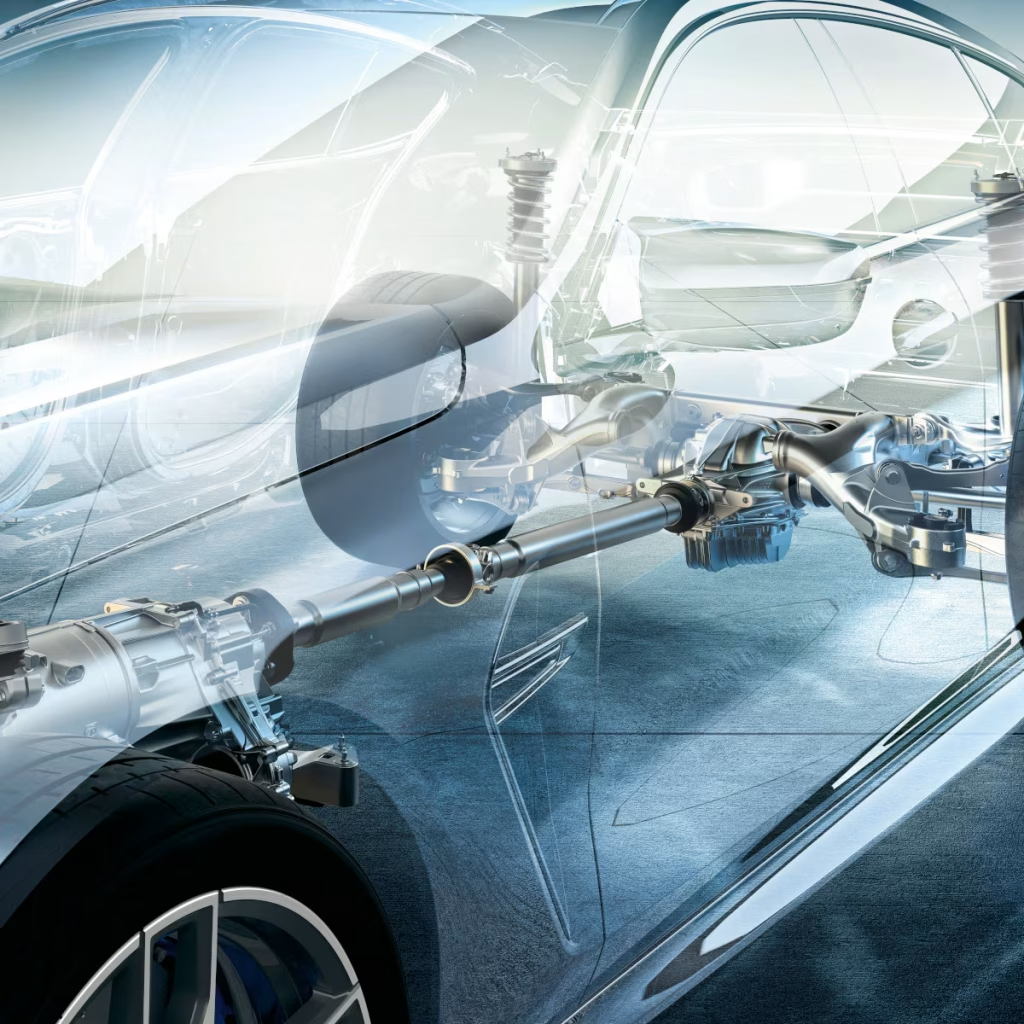
Adaptive M Suspension on BMW is like having two suspensions in one car. One is soft and comfy for cruising. The other is stiff and sporty for cornering hard. The car’s computer switches between them instantly, so you don’t have to touch a wrench.
How It Differs from Standard BMW Suspension
A normal BMW suspension uses fixed dampers. That means the ride always feels the same, no matter the road. Adaptive M Suspension changes the damping force on the fly. It listens to sensors that watch the wheels, steering, and speed. Hit a pothole? It softens up. Hit a twisty road? It stiffens instantly. You get comfort and control, instead of choosing just one.
Key Parts: Dampers, Shocks, Control Unit
The main stars are the adaptive dampers, special shock absorbers with adjustable valves. These valves alter the rate at which oil flows inside, thereby changing the stiffness. The control unit is the brain. It takes signals from sensors and sends commands to each damper in milliseconds. The shocks work with the springs to soak up bumps, but here they’re smart shocks that think before they act.
In short, Adaptive M Suspension is a teamwork system: sensors collect data, the control unit decides, and the dampers make it happen. That’s how your BMW stays smooth on rough streets but still hugs curves like it’s glued to the road.
Read More: Adaptive Headlight Malfunction On BMW
BMW Models That Have Adaptive M Suspension
Adaptive M Suspension isn’t on every BMW, but it shows up on a lot of the fun ones. Some get it as standard gear. Others make you check the option box and pay extra.
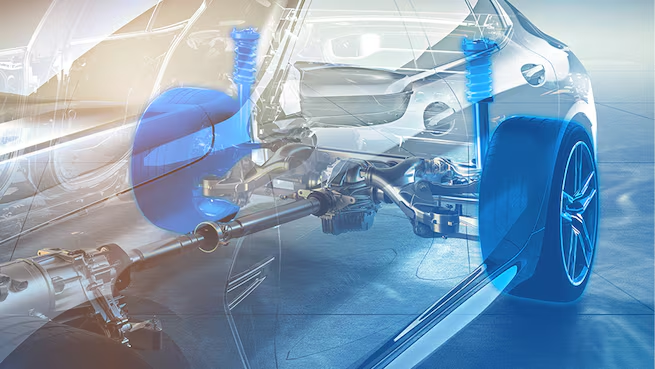
Common BMW Models with Adaptive M Suspension
You’ll see it often on the 3 Series (like the 330i and M340i), 4 Series, 5 Series, and X5. Many M Performance models, such as the M240i or M550i, also pack it in. Full M cars like the M3, M4, and M5 almost always have it. Some SUVs, such as the X3 M40i and X4 M40i, use it to make big cars corner like smaller ones.
Standard vs Optional
In higher trims or M cars, Adaptive M Suspension usually comes standard. In base or mid-level trims, it’s often part of a Dynamic Handling Package or M Sport Package. If you’re buying used, check the build sheet or VIN options list; many buyers skip it to save money, so not every car has it.
Why It Matters When Shopping
If you test drive a BMW with and without Adaptive M Suspension, you’ll feel the difference fast. Without it, the ride is either always soft or always stiff. With it, you get a car that’s smooth on cracked city streets but locked in tight on twisty roads. If you love versatility, it’s a feature worth hunting for.
How Adaptive M Suspension Works
Adaptive M Suspension works like a fast-thinking pit crew that never sleeps. It constantly watches the road and your driving, then adjusts your BMW’s shocks in real time. The goal? Give you the best mix of comfort and control every single second.

The Sensors and the Brain
Your BMW is loaded with sensors, wheel speed sensors, steering angle sensors, and even G-force sensors. These feed data to the Electronic Control Unit (ECU). The ECU is the brain. It decides how soft or stiff each damper should be, and it makes the call in milliseconds. That’s faster than you can blink.
Changing Damping Rates
Inside each adaptive damper is a valve that controls how quickly oil moves through it. Fast oil flow makes the ride soft; slow flow makes it stiff. When you hit a pothole, the system opens the valves for comfort. When you whip around a corner, it tightens them for stability. The change is instant; you don’t even notice it happening, you just feel the result.
Integration with BMW Driving Modes
Adaptive M Suspension is tied into BMW’s Driving Experience Control. Pick Comfort mode, and the dampers relax for smooth cruising. Switch to Sport or Sport+, and they stiffen for precise handling. It also works with steering, throttle, and stability control, so the whole car changes personality with one button.
Adaptive M Suspension is part spy, part bodyguard it’s always watching and ready to protect you from bad roads while letting you have fun when you want it.
Real-World Benefits of Adaptive M Suspension
Adaptive M Suspension isn’t just a fancy gadget; it makes a real difference every time you drive. It gives you comfort when the road is bad and sharp handling when the road is good. You don’t have to choose between a soft ride and sporty control. You get both.
Comfort Without Losing Fun
On rough streets, the dampers soften up to absorb bumps and potholes. That means less shaking, fewer rattles, and a happier spine. But unlike a soft, floaty suspension, it still feels connected to the road. You can cruise for hours without feeling worn out.

Better Cornering and Stability
When you take a turn at speed, the suspension stiffens to keep the car flat. This reduces the body roll that leaning feeling when the car tilts in corners. Less roll means better grip and more confidence, especially on twisty roads or in sudden maneuvers.
Customizable Ride Feel
Some days you want comfort. On other days, you want sharp, precise handling. With Adaptive M Suspension, you pick a driving mode, and the car changes instantly. You can even switch mid-drive Comfort for the city, Sport+ for that empty stretch of highway.
Downsides and Common Problems
Adaptive M Suspension is great, but it’s not perfect. Like most advanced tech, it comes with costs and a few headaches. Knowing the downsides will help you avoid nasty surprises.
The Price Tag
When buying new, Adaptive M Suspension can add a big chunk to the price, sometimes over $1,000 as an option. On used cars, it can raise the price too. Repairs are also pricey because the dampers and electronics are more complex than standard parts.
Potential Maintenance Issues
The dampers can leak over time, especially if you hit a lot of rough roads. When they fail, you might feel the car bouncing too much or riding harshly. Electronic control modules can also go bad, which means the system stops adjusting. If sensors fail, you might get a suspension warning light, and the ride may lock into one stiffness setting.
Why This Matters
Replacing a single adaptive damper can cost several hundred dollars, and a full set can be well over $2,000. If the control unit dies, it’s another expensive fix. That’s why regular inspections are important; catching a small leak early is way cheaper than replacing the whole system.
Is Adaptive M Suspension Worth It?

For most BMW drivers, yes, Adaptive M Suspension is worth it. It gives you a smoother ride on rough streets and sharper handling when you want to push the car. It’s like getting two suspensions in one, without having to crawl under the car with a wrench.
For the Daily Driver
If you use your BMW for commuting, school runs, or long highway trips, the Comfort mode will save your back. Potholes and speed bumps feel softer. At the same time, you can switch to Sport mode when traffic clears and enjoy a tighter, more connected drive.
For the Driving Enthusiast
If you love carving corners or hitting twisty back roads, the stiffer damping in Sport+ keeps the car flat and grippy. Less body roll means more confidence at speed. On track days, it gives you that locked-down M-car feeling without sacrificing weekday comfort.
Resale Value Considerations
BMW’s with Adaptive M Suspension can be easier to sell because many buyers see it as a must-have feature. However, savvy shoppers might check the system’s health before buying, since repairs are expensive. If it’s working well, it can add value to your car.
FAQ:
Does the BMW M3 have adaptive suspension?
Yes. Most BMW M3 models come standard with Adaptive M Suspension.
What is BMW Adaptive M suspension?
It’s a computer-controlled shock system that adjusts stiffness in real time for comfort or sport.
How do I know if my BMW has M adaptive suspension?
Check your iDrive driving modes for “Comfort/Sport/Sport+” suspension settings, or look in the VIN build sheet.
Does the BMW M3 have air suspension?
No. The M3 uses coil springs with adaptive dampers, not airbags.
How does adaptive M suspension work?
Sensors read the road and driving style, then the dampers instantly adjust stiffness.
Is adaptive suspension better than air suspension?
For handling and precision, yes. Air suspension is softer but less sporty.
Is Adaptive M suspension air suspension?
No. It’s a variable damper system, not an airbag-based setup.
Does the M Sport Package include adaptive suspension?
Not always. Some models require adding it separately in the options list.
Is M Sport suspension the same as adaptive suspension?
No. M Sport suspension is fixed, sport-tuned; Adaptive M can change stiffness.
What is an adaptive M-suspension professional?
It’s a more advanced version with extra settings and predictive adjustments, found on higher-end models.
How do I know if my BMW has M technology?
Look for M badging, special trim, and features like M Sport brakes or M suspension in the build sheet.
How do I know if I have M Sport suspension?
Your car will sit slightly lower and have stiffer springs compared to standard models. VIN decoding can confirm.
Does the BMW M4 have adaptive suspension?
Yes. Most BMW M4 models come with Adaptive M Suspension as standard.
How does BMW adaptive work?
It monitors road, speed, and steering, then changes damper stiffness instantly.
Does BMW have adjustable suspension?
Yes. Many models offer adjustable damping or air suspension depending on the trim.
How do I know if I have adaptive ride control?
You’ll see suspension mode options in the iDrive menu, or a button with a damper icon.
Is BMW M Sport suspension hard?
Yes. It’s stiffer than standard for sharper handling.
What do you get with the M Sport package?
Sportier styling, unique wheels, performance tires, and M-tuned chassis parts, sometimes with sport suspension.
Wrapping Up:

Adaptive M Suspension on BMW isn’t just a fancy extra; it’s the secret sauce that makes your car comfy for coffee runs and fierce for freeway fun. It watches the road, reads your moves, and tweaks your shocks in a blink so you get the best ride every time.
The big takeaways? You get comfort without the squish, cornering without the lean, and a car that can change mood faster than you can say “Sport+.” Yes, it costs more to buy and fix, but for many BMW lovers, the driving magic is worth every penny.
So if you like your daily drive to feel like a luxury lounge and a race car, depending on your mood, Adaptive M Suspension is your new best friend. Just remember to treat it well, and it’ll keep your BMW hugging curves and dodging potholes like a champ. If it had a dating profile, it would say: “Loves long drives, hates bad roads, adapts to your style.”





